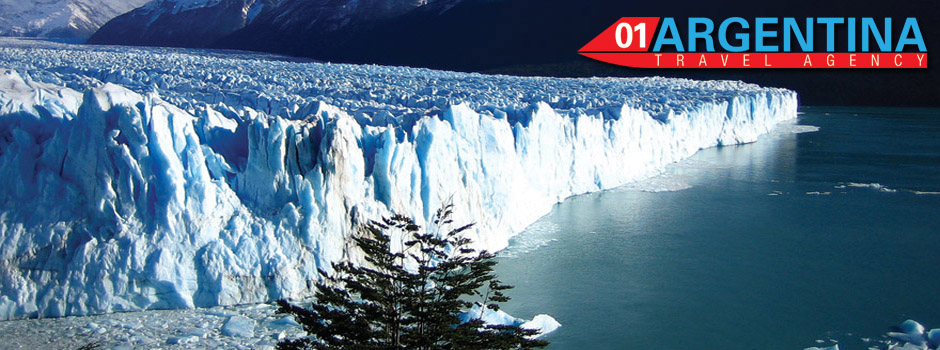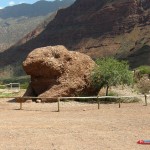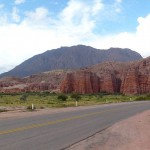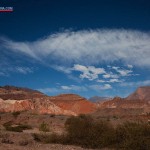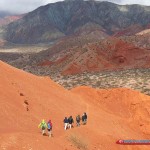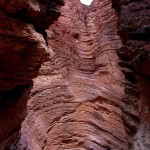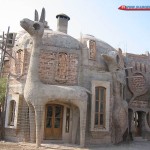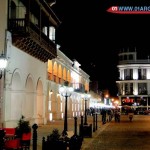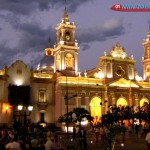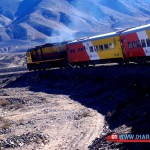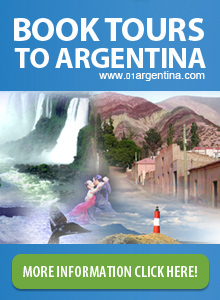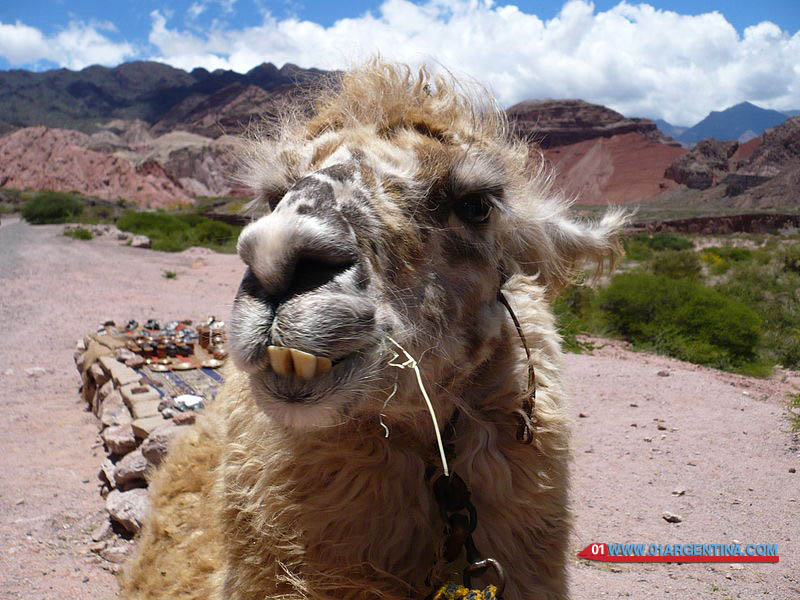 Salta provides historical tourism, eco-tourism, religious tourism, adventure tourism and gastronomic tourism. Salta combine all these types of tours like few places in South America. The sophisticated city of Salta tops the province of the same name in the magnificent surroundings of Valle de Lerma, in the Andean foothills. Mountain and jungle give the unrivaled city, famous as one that has best preserved the Spanish colonial heritage throughout the country. Discover what to see in Salta and fall in love the main destination of northwestern Argentina.
Salta provides historical tourism, eco-tourism, religious tourism, adventure tourism and gastronomic tourism. Salta combine all these types of tours like few places in South America. The sophisticated city of Salta tops the province of the same name in the magnificent surroundings of Valle de Lerma, in the Andean foothills. Mountain and jungle give the unrivaled city, famous as one that has best preserved the Spanish colonial heritage throughout the country. Discover what to see in Salta and fall in love the main destination of northwestern Argentina.
tourist sites in Salta
Train to the Clouds: Impressive rail route that crosses the Andes more than 4000 meters high. This true flying train to the clouds of Salta from the railway station of Salta and gives incredible panoramas of Salta altiplano plus unmatched in tunnels, sinuous curves and winding roads sensations.
Central Plaza: founding point of the city, the Plaza July 9 is the main reference site Salta, gathering many buildings of great historical value. The Cabildo, the Cathedral, the provincial theater, the Museum of Archaeology and Cultural Center America are located all facing the Central Plaza, where leafy trees and flowers invite you to relax.
Balcarce: The charming colonial architecture provides a unique magic to this pedestrian promenade, which at night becomes one of the most attractive spots in Salta. folk clubs, typical restaurants and lively bars make up the cultural offerings of Balcarce, which also hosts a colorful crafts fair on Saturdays, Sundays and feriadas since morning. It is 800 meters from the Central Plaza.
Cerro San Bernardo: It is one of the main natural sites to see in Salta Capital, declared a Municipal Reserve for its rich flora and fauna. You can climb through a path of more than a thousand steps, which are driving through 14 stations of the Via Crucis to the wooden cross and Christ the Redeemer at the summit, both of the early twentieth century. Another option is the classic cable car, which rises to the summit providing spectacular views. There is also a paved road to drive up. The Cerro San Bernardo has a complex of stone terraces, a handicraft shop and a bakery. At the foot of the stairs is the iconic Monument to Guemes.
Villa San Lorenzo: Just 12 kilometers from the center of Salta this picturesque village, located in the Valle de Lerma, in the foothills of the mountains, in the jungle of Yungas feature of the region is located. Characterized by its elegant old residences, the Villa San Lorenzo is a refreshing walk where the traveler finds all accommodation and gastronomy to enjoy your stay. Next to the town is the Quebrada de San Lorenzo, an ecological reserve where the emblematic Castillo San Lorenzo, the nineteenth century is installed.
Cabra Corral: The unique panorama of mountains and water make the reservoir Cabra Corral in one of the main attractions to see in Salta. privileged ecotourism and adventure sports scene, this place is located 85 kilometers from the city and has its own infrastructure of hotels and services.
Cafayate: It is one of the main tourist destinations in the province of Salta, 190 kilometers from Salta capital. It is housed in the Valles Calchaquíes, where beautiful landscapes typical of northwestern Argentina are sighted, among colorful hills, streams and rocks of curious shapes. Romantic colonial architecture, beautiful shaded squares and fine wines make Cafayate a must-see place to visit in Salta.
Cafayate is a town of the Calchaquíes valleys located in the southwest of the province of Salta in northern Argentina. He is head of the department of Cafayate and recognized for the quality of the wines produced there.
Tourism Cafayate
Crossed by the National Route 40, Cafayate and the surrounding area is famous for its vineyards, excellent wines and wineries where grapes are grown torrontés type.
Cafayate is the most important in the tourist circuit of the Calchaquíes Valleys city. Still it retains the characteristics of its colonial architecture; its streets, its church. A particular attraction is the corn mill eighteenth century, made by Jesuitas.1
Among its attractions, both cultural and natural, are: Museum of Vine and Wine, Archaeological Museum, Paseo de los Artesanos front of the main square, its regional cuisine, the Quebrada de las Conchas or Quebrada de Cafayate and nearby villages San Pedro de Yacochuya, among others.
In February it takes place the traditional Serenata to Cafayate where folk artists gather field; This festival is considered the most important of the province of Salta and one of the highlights of the country.
Quebrada de las Conchas
The nature reserve Quebrada de las Conchas, also known as Quebrada de Cafayate is located within the Valles Calchaquíes in the province of Salta, north of Argentina, very close to the town deCafayate.
Located 90 km southwest of the city of Salta it includes part of the departments of La Viña, Guachipas and Cafayate and belongs to the dry Chaco ecoregion mount (saws and pockets).
This gorge is an area of great beauty with paisajítica very striking for its reddish colors rock formations. In 1995 it was declared by Decree No. 6806 as managed nature reserve, with an area of 25784 ha, to protect the curious geological formations and high walls of unique scenic value, while an important paleontological site belonging to the period cretácico. The gorge is a geologically modern accident, caused by tectonic movements that took place in the last two million years.
By the creek and within the reserve the river of the Conchas where the trace of National Route 68, which connects the town of Cafayate in Salta city is located. In its route they can be seen varied landscapes and landforms variety of colors that stand out among the Garganta del Diablo and the amphitheater of reddish sedimentary rocks. In the past (when the past was wet) these formations were cascades of fresh water and the concentrated water flow were eroding the stone, which today astonish by its special configuration.
Other geological formations that can be seen on the side of the road are. Amphitheatre, El Fraile, El Sapo, windows, locks, etc. and about 7 km from Cafayate Los Medanos, fine aeolian sands deposit calcáreas.
For its rich archaeological and historical past, the reserve has many fósiles.4 moral bridge fossil remains in the group of frogs are pípidos. There are layers of marine limestones and continental very rich in fossils and even dinosaur footprints. Also, they have called stromatolites. In the Yesera, there is a major source of fossil fish, evidence of a process that would have occurred about 15 million years ago: the last entry of the sea to the mainland.
In recent archaeological research it was discovered that a few meters from the current Route 68 ran the Inca Trail, adding important archaeological site.
Places to visit in the Salta city
Iglesia San Francisco: National Historic Monument, this beautiful church is one of the main sites to see in Salta, both for its architectural interest and its importance in the history of the city. The Basilica and original convent were erected in 1625, although the current temple is of 1877. The San Francisco has the highest church steeple in South America. It is located in Caseros and Cordoba streets.
Cathedral Basilica of Salta: Built in 1882, Salta Cathedral Basilica and Sanctuary of the Lord and the Virgin of the Miracle is emplaced on the Central Plaza. Captivates visitors with its rich art of interior, with special mention of the church altar decorated in gold.
Salta Craft Market: One of the most picturesque places to see in Salta, installed in a historic house belonging to the Jesuits until 1760. The market exhibits the typical crafts of Salta fabrics, silverware, leather, fine wines, homemade sweets, pottery and basketry.
San Martin Park: Pleasant green space starring walks outdoors in the city since the early twentieth century. It has a lake, botanical garden, playground, hiking trails and large trees, in addition to important monuments like the last sculpture of Lola Mora.
Archaeological Museum of High Mountain: The MAAM is an impressive old building on Central Plaza. Among its valuable archaeological pieces three frozen Inca children five centuries ago, which remain frozen perfectly stand out.
